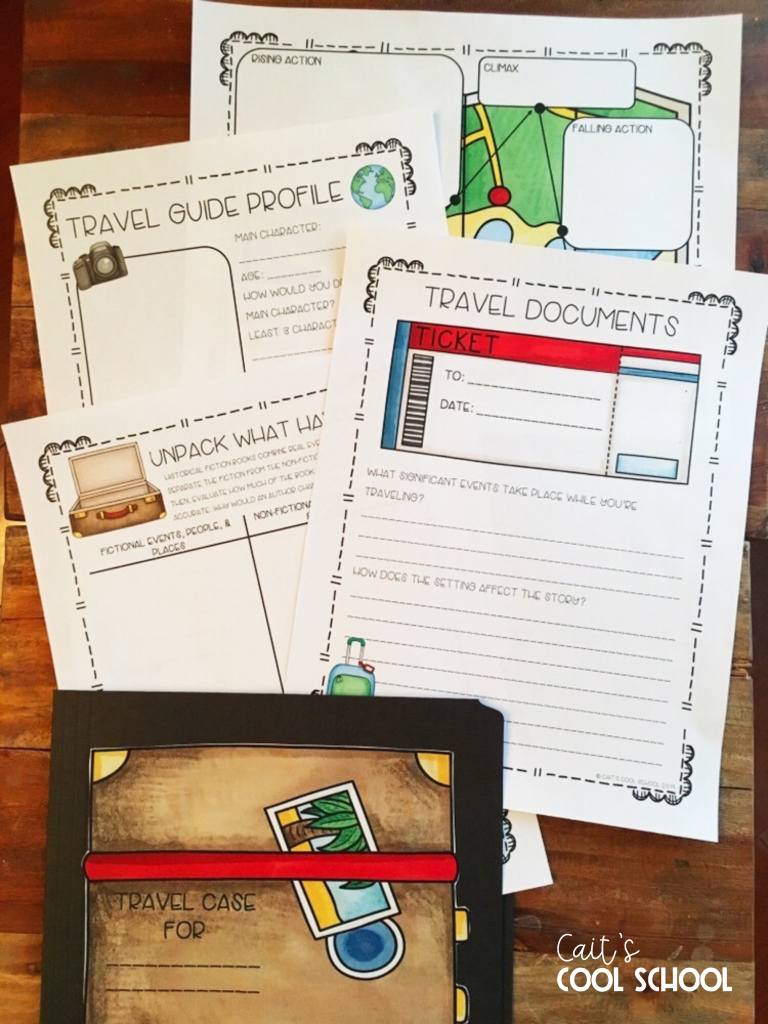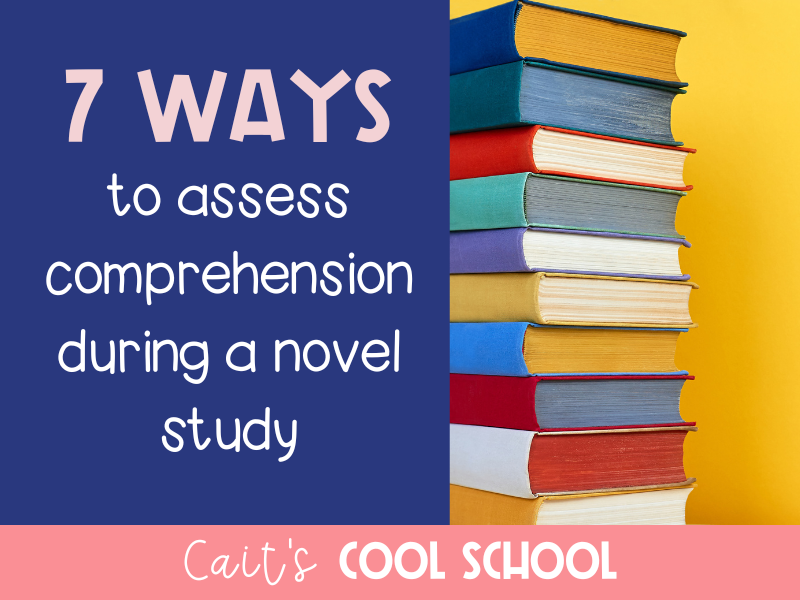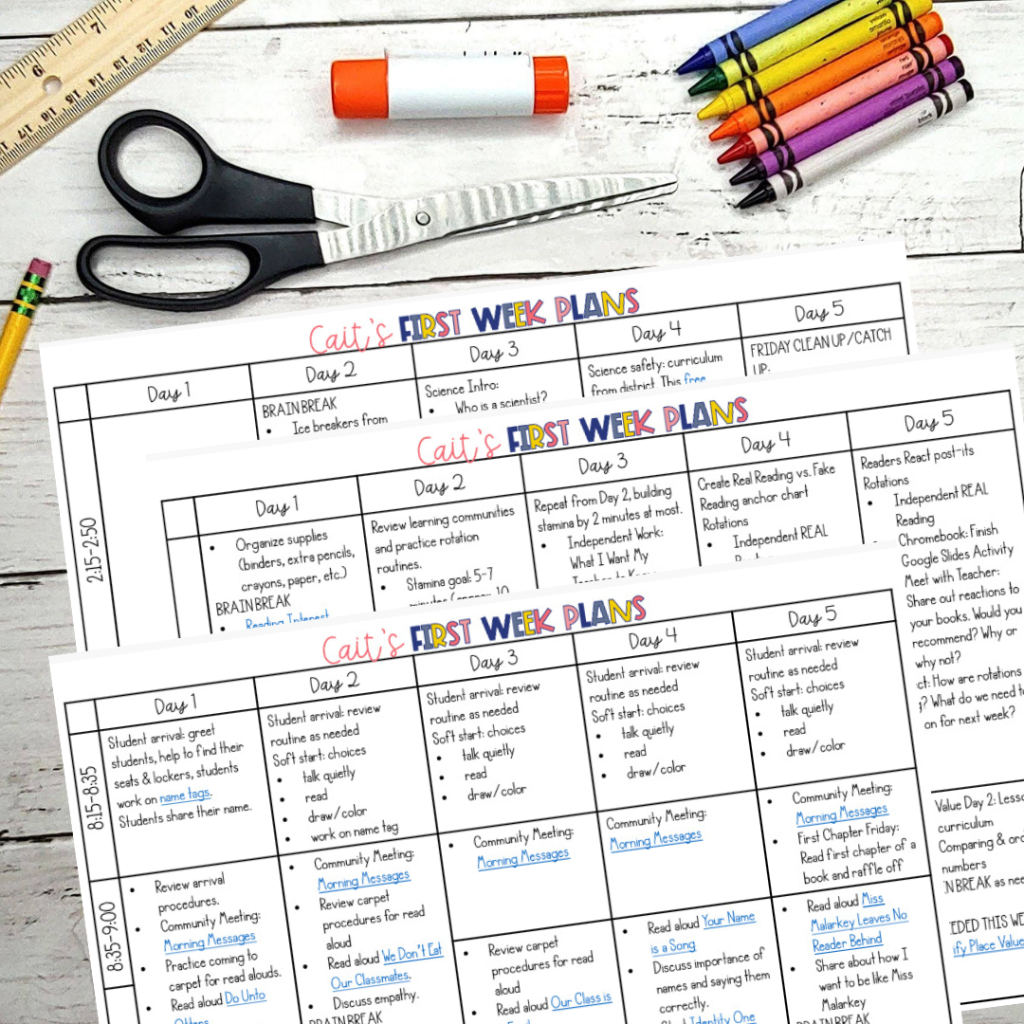
The beginning of teaching setting is just having students figure out the time and place of a story. By upper elementary grades (especially 4th and 5th), we’re ready for the deep dive into analyzing the role of the setting and how it affects the story.
Historical fiction is the best way to analyze setting. Check out my previous blog post on the elements of historical fiction to see how I introduce this genre (includes suggested mentor texts!). To follow up, we travel back in time using this travel case.
The travel case is packed with the luggage we need. We walk through the different parts of the story, constantly reflecting back on the influence of the setting.
First, we identify the setting (especially the time!) and any significant historical events. We use historical notes or timelines provided by the author in addition to researching more on our own. I love using BrainPop videos, Ducksters, and Readworks for simple background information. If we hit on more specific aspects about a time period, I try to supplement where I can. For example, in Bud not Buddy, Bud and Bugs go to Hooverville. This place is particular to the Depression era and researching those helped to explain what the boys were experiencing.
Next, we closely look at the characters. In the texts I’ve used, the main characters are fiction, but in reading the author’s note, occasionally you can find that they’re based off a real person. Even better? Finding a “real” person mentioned in the text, like King Christian X in Number the Stars! Students are always fascinated by this concept too. It also lends to the authenticity of the setting.
Two more components include creating a plot diagram and writing a letter to someone to describe our time travel experience. In writing the plot diagram, we can see how the setting affects parts of the plot and determine how the story would be different now. The letter allows us to visualize ourselves in the setting to think about what we might see, hear, or participate in.
The last part of our setting deep dive is when we do a side-by-side comparison of the setting vs. now. In Bud not Buddy, for example, the fact that Mr. Lewis needs to send a telegram versus calling Bud’s father on the phone is a game changer for Bud. It also shows the historical accuracy of the book. This final comparison really shows how the setting drives the plot.
After every novel study, we review the book as a whole and I love to hear my students’ opinions on different book selections. It’s also interesting to see if I’ve gotten them into historical fiction as a whole. If they are, I’m always ready to share with them another historical fiction book, like the companion to Bud not Buddy which is The Mighty Miss Malone, The War that Saved My Life (another WWII novel), or the I Survived series.

Bonus extension? If there’s a movie to watch. Number the Stars has a little known movie called “Miracle at Midnight.” It doesn’t match up very well with the book, but is perfect for comparing!
What’s up next? Writing our own historical fiction narrative! This is such a fun way to combine research with narrative writing, or even give students a chance to write a narrative in the same setting as the novel study. Read more about that process here!

Grab a bundle of reading and writing resources for historical fiction here! Includes the introduction activity, this travel case, and the follow up narrative writing project.
P.S. Love the thought of integrating reading and writing? You might also be interested in:
- Strategies for Integrating Reading and Writing
- Mystery Blog Series…which starts here!
- Point of View Activities (includes a free resource!)





 The first FIVE days of lesson plans for the beginning of the year.
The first FIVE days of lesson plans for the beginning of the year.